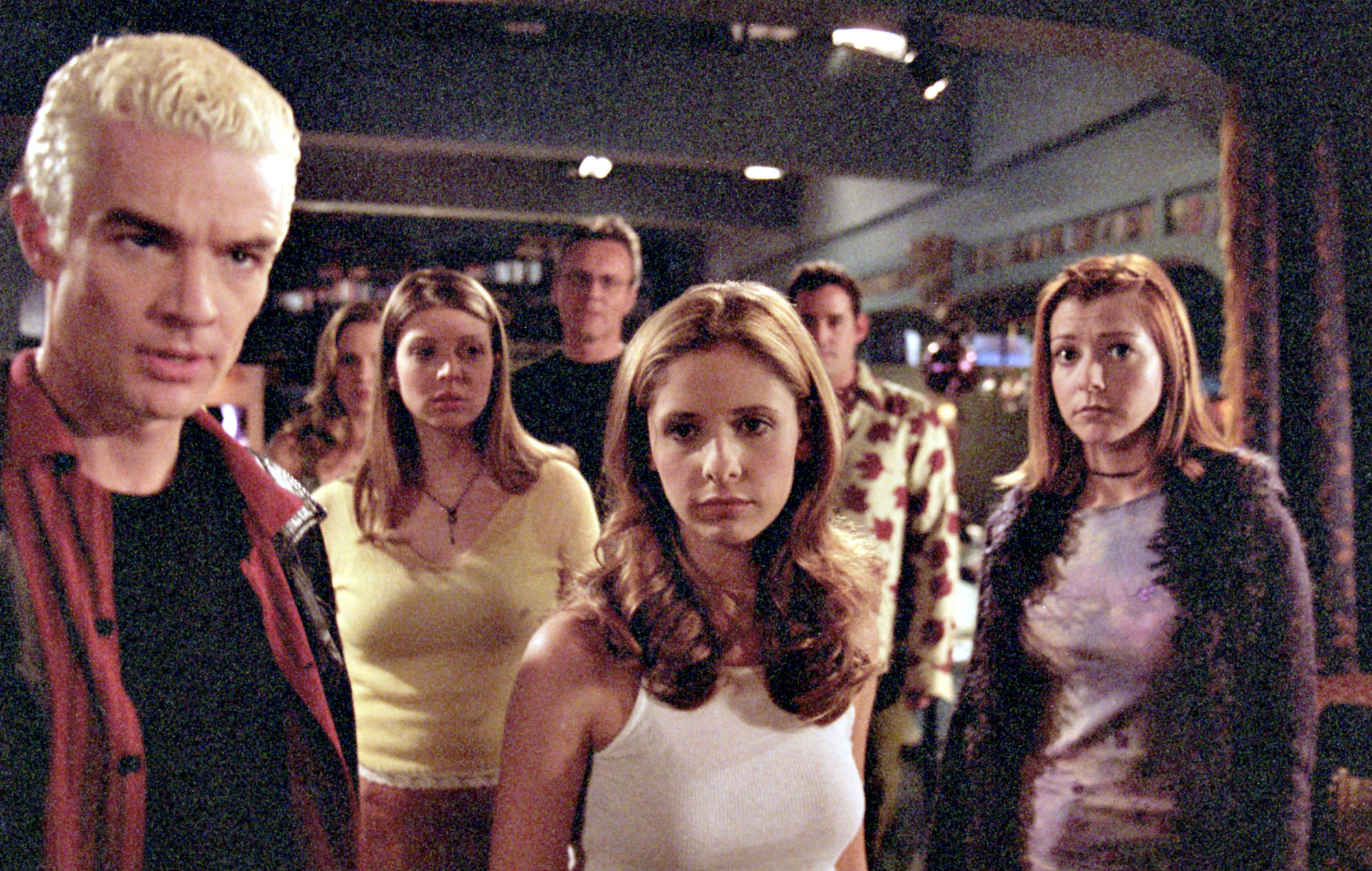Table of Contents Show
“It’s 2021” is a valid answer to a lot of questions nowadays. If someone were to ask me why I think Buffy The Vampire Slayer is a better guide to identifying a tragic hero than Aristotle’s Poetics, I’d say, “It’s 2021.” Rough translation: it’s about damn time things changed. Buffy Summers should be the go-to example of a tragic hero in a time where men are no longer the status quo.
Who Is Buffy Summers?
Just a freshman in high school when we were first introduced to her in 1997, Buffy is many things. She’s a troublesome teenager, a loving daughter, a caring friend, a bright-eyed lover, a relentless fighter, a fashion icon, but, most importantly, she’s the slayer. Born into the responsibility of saving the world, Buffy carries more weight on her shoulders than the average 15-year-old. She is tasked with slaying vampires and ridding demons in her new hometown of Sunnydale, a small California town home to a Hellmouth.
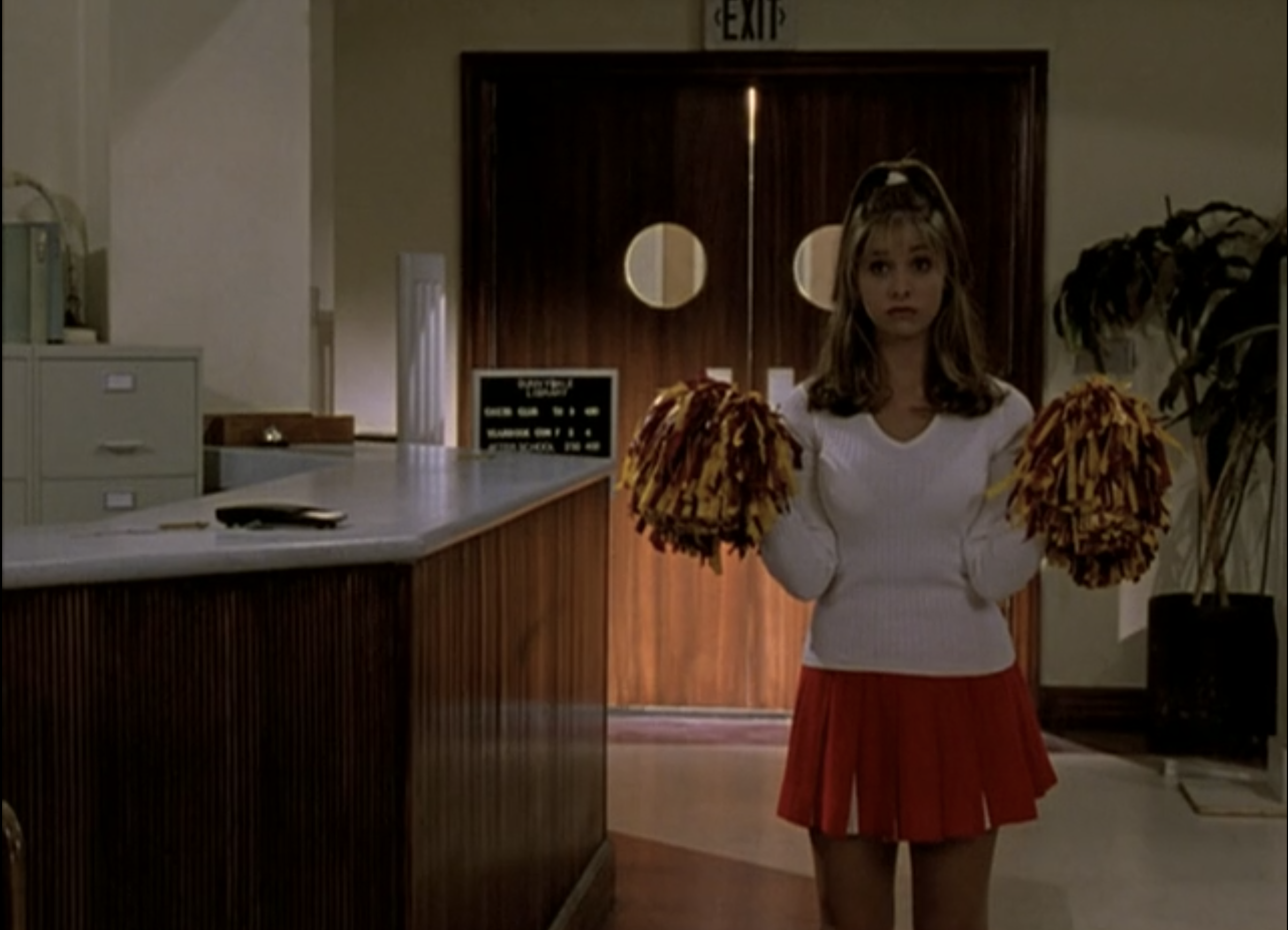
After being kicked out of her previous school for burning down the gym (all part of the job when you’re the slayer), Buffy tries her best to fit into Sunnydale as a plain ole teen girl. Unfortunately, that proves hard to do when her new watcher is the school’s librarian, and she has to save her soon-to-be best friend from a gang of thirsty vampires. No matter how hard she tries to escape it, her duty as Slayer follows her. Expecting to have another year of her social life ripped away, Buffy is surprised her newfound friend group quickly start helping her with her slayer duties, marking the beginning of a beautiful friendship as the “Scooby Gang.”
Aristotle’s Tragic Hero
The tragic hero has evolved over time; the original criteria came from ancient Greek philosopher Aristotle in his treatise Poetics. In Aristotle’s eyes, no woman could ever earn the title, a belief that was and continues to be challenged by women throughout history. One of those women being Buffy Summers.
The Criteria
The tragic hero must have a specific set of characteristics to earn the title, according to Poetics. In his treatise, Aristotle states that the criteria are as follows: The hero must be like us, but better. So the audience needs to find redeeming or relatable factors in them but also look up to them. This is typically because of some godly or superhuman quality; The hero must have a fatal flaw.
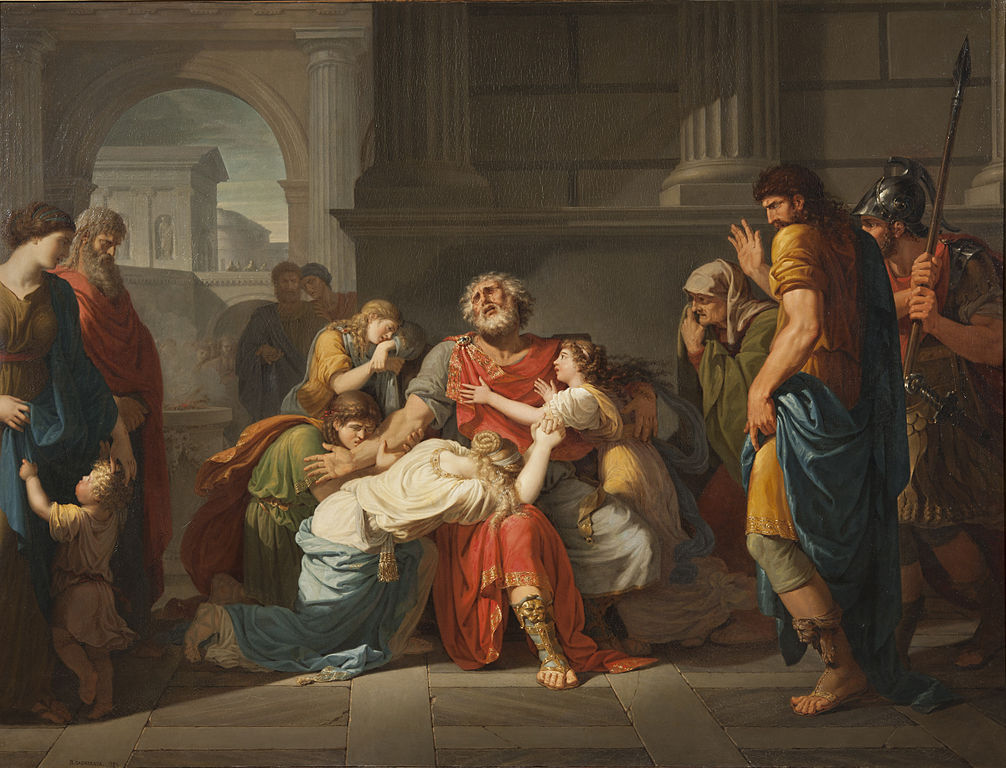
This flaw will be the thing that drives the hero’s journey and eventually lead to their downfall; The hero’s behavior must be appropriate to their position in life. Most, if not all, classic tragic heroes were noble people or someone of high status; The hero must be good. This does not mean that the character is morally good at all times. Aristotle just needed the character to make the right decisions at the right times; Most importantly, the hero must have a reversal of fortune. Whether it ends in their death or just tragedy, the hero must suffer “to a degree that outweighs what it seems like the character deserved.” (( Hogue, Chelsea. “Tragic Hero.” LitCharts. LitCharts LLC, 5 May 2017. ))
How Buffy Fits The Mold
Buffy is one of the best examples of how women can and do qualify as tragic heroes. She easily ticks all the boxes. She is seemingly a normal teenager with math homework and hormonal acne just like us, but better with supernatural strength and a centuries-old destiny. Buffy’s fatal flaw is her inability to give up her destiny as the slayer. As much as she wants to ignore her duties, she cares too much and can’t stand to sit and watch as people get hurt.
While she may not be a literal goddess or princess, Buffy is considered a popular girl in high school. If that doesn’t scream high status in the ’90s, I don’t know what does. At the end of the day, Buffy has to kill, and she has to break the rules. She’s considered a horrible student, a rebellious child, and a savage killer; all things deemed wrong in normal moral codes. But she does what she does because it’s the right thing to do at the right time. Last but certainly not least is Buffy’s reversal of fortune. If there is one thing that this series focuses on, it’s how much Buffy suffers. In more ways than can be counted.
Sunndydale Is One Hell Of A Time: The Tragedies In Buffy’s Life
Since we know Buffy, without a doubt, qualifies as a tragic hero, let’s discuss her greatest tragedies, ones that only make her accomplishments as a hero even more astonishing. While Buffy suffers plenty of tragedies throughout the series, there are two deaths that occur in the first five seasons that prove how unfair life is for Buffy and change who she is as a character.
Angel
Buffy’s first love just had to be a vampire. Luckily, this one had a soul. A vampire who had easily killed hundreds was cursed with a soul by a Romani tribe in the 1800s. After regaining his soul, Angel became a benevolent vampire that couldn’t stand to feed off another human and thus survived solely off pigs’ blood. Buffy met Angel in season one when he warned her about the Master and his plan to gain power through the Harvest. This is also where Buffy obtains her iconic silver cross necklace as a gift from Angel to protect her. After proving to be a great ally (and an attractive one at that), Buffy befriends him.
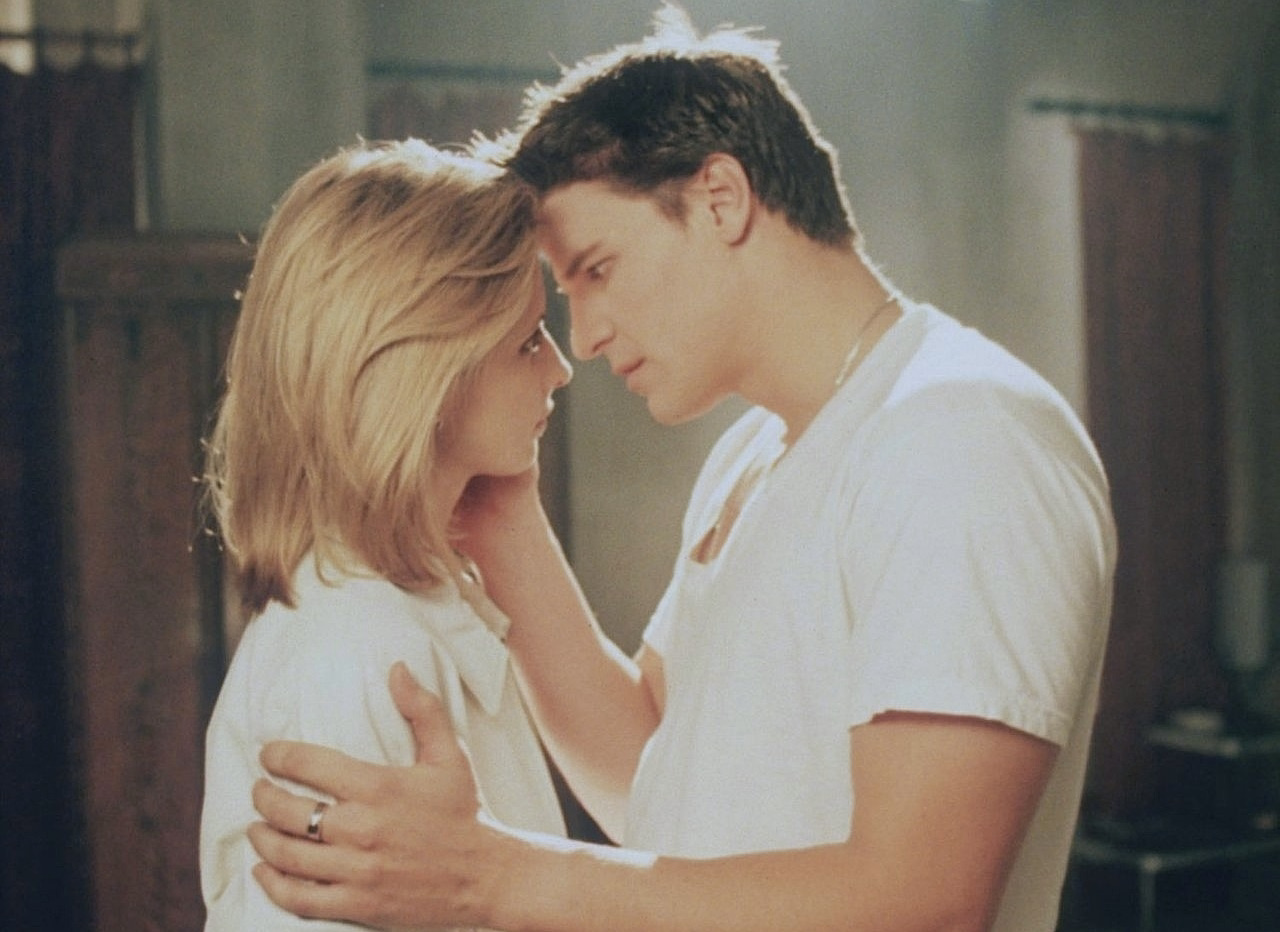
The chemistry between the two characters quickly grew as Buffy realized this was the first romantic interest in her life to whom she could talk about the spooky stuff. With Angel, she could be wholeheartedly herself, demon-slaying and all. He would help her kill vampires and do her nightly stakeouts, which typically end in a makeout sesh. He was kind to her; he loved her. The only glaring issue was his whole undead situation. She couldn’t introduce him to her mother or go on dates in broad daylight with him like she should be able to with a normal boyfriend. This relationship was Buffy’s first real wake-up call that she could never have a normal relationship. Being the slayer will always make her dating life harder. The only people that would potentially stick around are vampires or someone with a lot of understanding.
But that didn’t stop the two from being inseparable. Their love and devotion were marked by matching Claddagh rings (the heart for love, the hands for friendship, and the crown for loyalty). Then just as Buffy and Angel’s relationship is reaching its peak, tragedy strikes. One night of love and passion was all it took to reverse the curse put on Angel so long ago. “A moment of pure happiness” broke the curse and took away the soul that made Angel so loving, restoring him to a blood-thirsty monster. When Buffy realizes what has been done, she is heartbroken and humiliated. She is betrayed by her first love. The one person that truly understood what her duty was as the slayer was now lost to her.
In an effort to get Angel back, Willow reperforms the sacred ritual which gave him his soul the first time. However, just before the ritual works, “Evil” Angel opens a hell dimension in an attempt to reak havoc on Sunnydale. After the dimension is open, Angel regains his soul and doesn’t understand what is happening. In the most twisted turn of fate, Buffy is forced to close the hell dimension, and the only way to do so is to kill the person who opened it, her newly restored lover. Not only does Buffy lose her greatest love metaphorically when he loses his soul, but she loses him a second time physically when she has to kill him to close a literal portal to hell. Her duty to protect the world from evil and fatal flaw of having a good conscience were put before her love for Angel. It didn’t matter that she was a teenager helplessly in love; she had a world to save. A scenario that would continue to plague her love life from then on.
Joyce
A mother is an irreplaceable figure in anyone’s life, but in a life where Buffy carried so much pressure and responsibility on her shoulders, it was beyond important. Having a mom to come home to and cry on their shoulder was undoubtedly the most normal aspect of her life. Even before Joyce knew about Buffy’s “slayage” and she just seemed like an out-of-control teen, she still thought the best of Buffy; she never gave up on her. Did she find it odd that Buffy got caught up in every school “accident” or was always coming home late at night? Absolutely. But she still bought Buffy prom dresses and kissed her goodbye every morning. Because at the end of the day, Joyce was Buffy’s mom, and she would do anything for her kid.
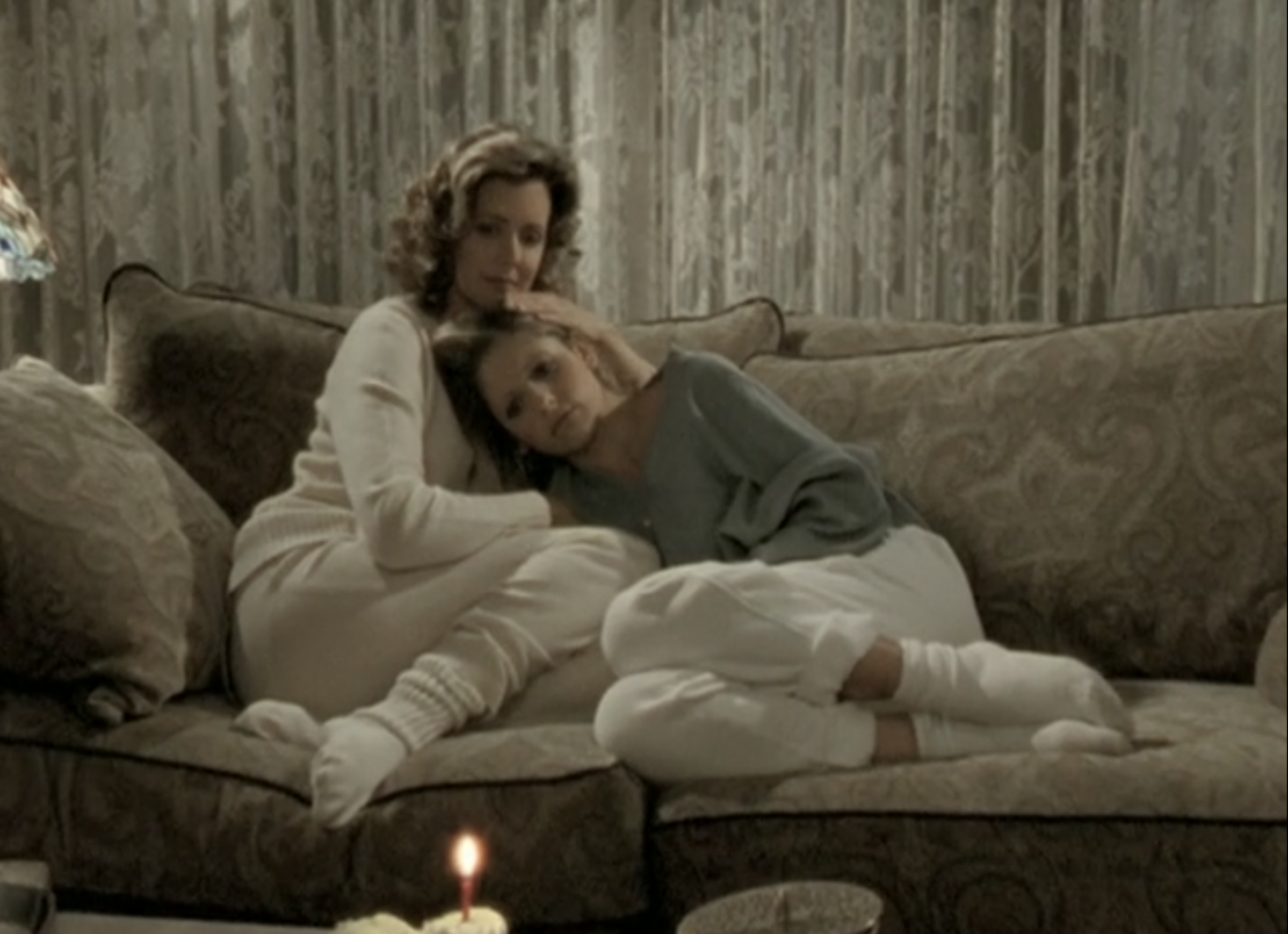
When Buffy finally has to tell her mom that she is the slayer after dusting a vampire right in front of her face, Joyce says, “Have you tried not being a slayer?” in classic mom fashion. Demon slaying and all, Joyce supports Buffy through it all. When Dawn appears in season five, Joyce is in full mom-mode. Whether it’s keeping the two girls from fighting or making Buffy pick Dawn up from school, Joyce made sure that slaying came after chores and big sister duties. Buffy’s last string tied to normalcy was cut when she came home to find her mother dead on the couch one day. The utter shock on Buffy’s face is enough to make any watcher ugly cry. It’s at this moment that Buffy loses any sense of childhood that she held onto. The responsibility of keeping the world safe was now stacked on top of taking care of her little sister and trying to fill the shoes of a mother. Watching Buffy lose her mom to such normal human causes felt like such an unfair dealing of cards. She can kick a vampire’s ass and kill a couple of monsters but she couldn’t save her mom from an aneurysm.
Historical Tragic Heroines
While Artistotle’s criteria for the tragic hero were very much tailored to men so far as to condemn women from fitting the mold, women came through with traits of tragic heroes even in ancient Greece. So while they technically weren’t considered tragic heroes during their time and usually weren’t the main character of their stories, even before Buffy arrived, we had some great examples of tragic heroines. First, Madea. Madea is from the play by the same name written by Euripides about a human woman born the granddaughter of the sun god Helios. Her fatal flaw is her undying love for her husband Jason, a love that drives her to murder several people (including her own children) when she discovers he has been unfaithful. Second, Iphigenia. The daughter of King Agamemnon, who lead greek troops into the Trojan war.
When Agamemnon mistakenly kills a stag belonging to the goddess Artemis, he must choose to forfeit the war or kill his firstborn daughter as a sacrifice to Artemis, so she will allow the Greek troops to enter Troy. Iphigenia is sacrificed at the hands of her father in order to “save Greece” and “become a heroine.” These characters had traits of a tragic hero, but because of the time in which these characters were created, they aren’t quite THE hero of their stories like Buffy is. Buffy being the main character and main carrier of burden in Buffy The Vampire Slayer gives her more agency and importance.
Alcestis: Buffy’s Twin In Suffering
While the connection between Buffy and Alcestis is not exact, the suffering they both face as heroines is parallel. Two women who sacrificed themselves for a loved one, only to be brought back from the grave. Their journeys align with the grief they experience.
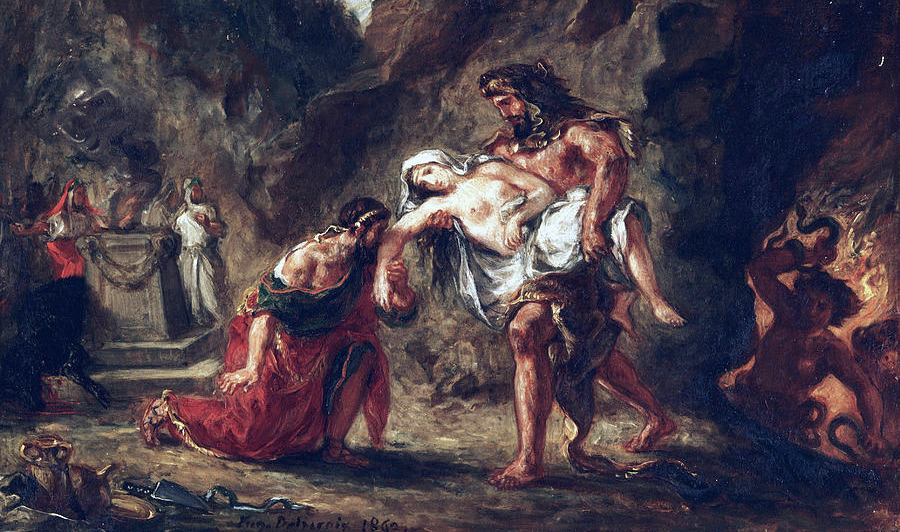
Ferdinand-Victor-Eugène Delacroix. Hercules and alcestis. 1862. Oil on cardboard. Phillips Collection. 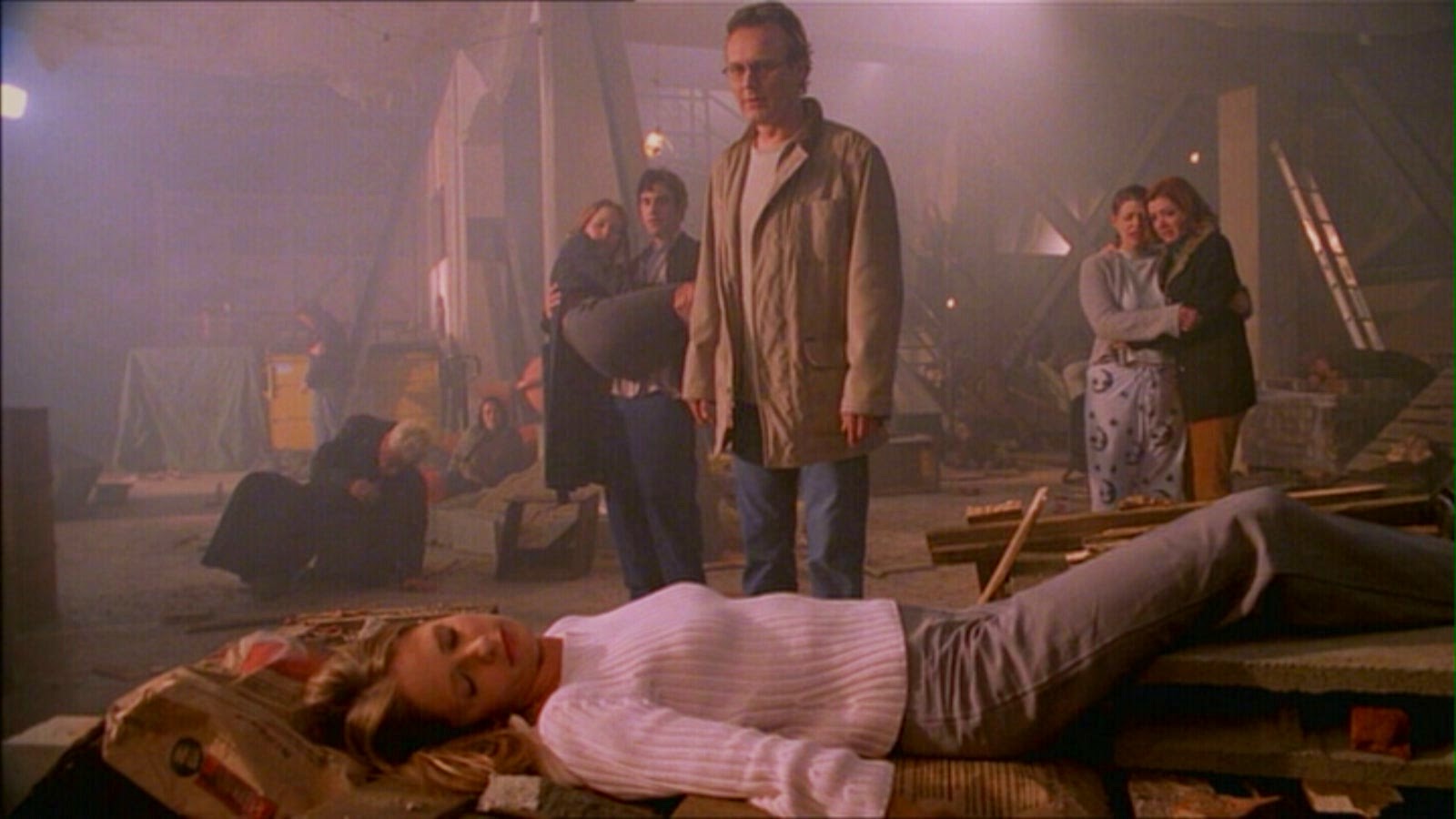
Buffy The vampire Slayer. Season 5, Episode 22: “The Gift.” 1997-2003. 20th Century studios
Queen Alcestis was the daughter of a king and wife to Admetus. When Admetus was due to die, he begged for more time to live and persuaded Fates to prolong his life. In return for this kindness, Admetus was to send someone along with death in his place. After asking his elderly parents to take his place, they declined. With the fatal flaw of loving Admetus and her good conscience of wanting what was better for her children, Alcestis offered to sacrifice herself in his place. Much like Buffy, the love for her family pushed past any fear of death.
As a gift to a mourning Admetus, Heracles fights to resurrect Alcestis and return her to him. The only condition is she is unable to speak for three days while she is purified of the experience she had. Alcestis lives those three days in silence and pain. Alcestis made the ultimate sacrifice for someone she loved and was brought back from the dead by a friend who only meant well. After the trauma of death, Buffy and Alcestis aren’t even allowed to rest in peace. Their suffering came not only from her initial sacrifice but from their unwilling second sacrifice of being brought back and suffering in silence. (( Grochala, Sarah. 2012. “Tragic Heroines.” ))
The Gift: Buffy Makes Her Greatest Sacrifice
Throughout the series, Buffy has sacrificed her social life, her love life, people she loves, and any sense of a normal life. But her greatest sacrifice comes at the end of season five when she has to make a decision to put everything and everyone before herself.
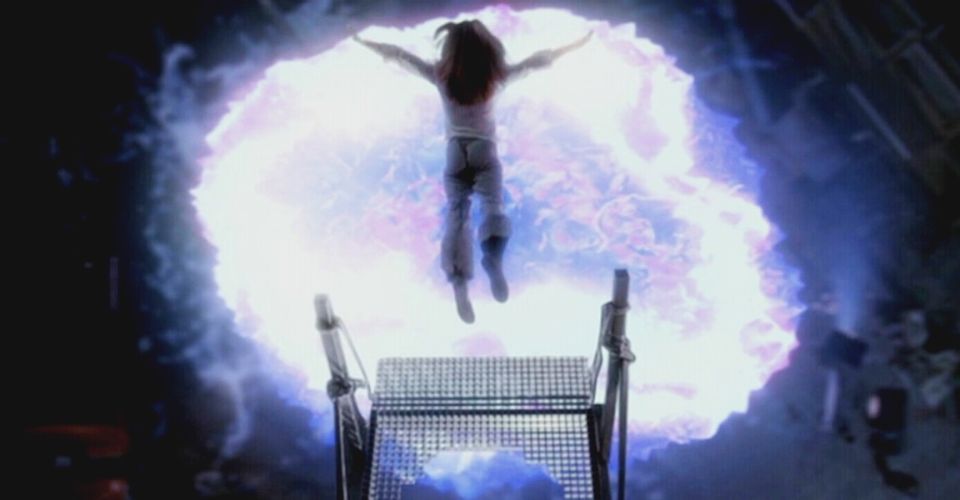
When the world is once again on the precipice of ending, Buffy is at the center of it all. Dawn was put into Buffy’s life by a group of monks who made her out of Buffy in order to keep her hidden and safe. Because only the slayer could protect the key to the underworld. In the season five finale Glory opens this portal to hell that quickly begins spitting out evil creatures of all types. Dawn knows her blood is the key and tries to jump into the portal in order to close it.
But Buffy being Buffy doesn’t let that happen. Buffy remembers that they share the same blood and knows she has to sacrifice herself. Much like Alcestis, sacrificing herself in place of a loved one was the only option. Without hesitation, Buffy kisses her sister goodbye and throws herself into the mouth of hell not just to save the world, but to spare her sister. The speech that plays overplays her sacrifice is her way of passing on her responsibilities and lifting the weight of the world off her shoulders for the first time. Through death, Buffy is finally free.
A Rude Awakening
Alcestis was brought back to life by a well-meaning friend; Buffy’s case was not much different. Both tragic heroines make their second sacrifice when they are unwillingly resurrected. When the gang performs a spell to bring Buffy back, they’re interrupted, and they think it goes wrong, so they leave the graveyard, assuming they’ve failed. But, unfortunately, that isn’t the case. Buffy is revived and is awoken to be stuck six feet under, suffocating in her own coffin. She eventually claws her way out but is left with physical scratches and mental wounds.
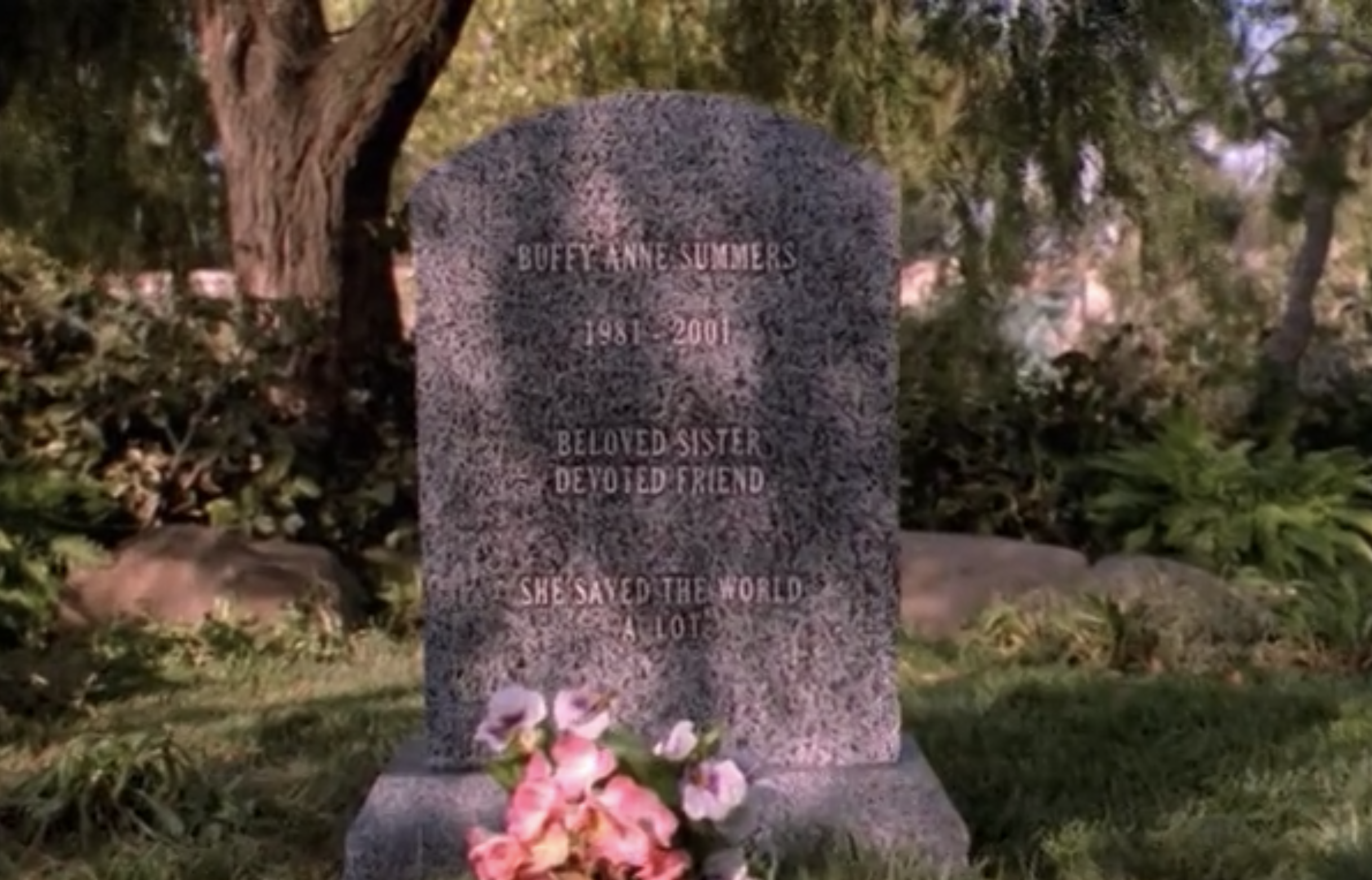
When Buffy first comes back, she is unable to speak or think correctly. Just like Alcestis, the trauma she has endured has rendered her speechless. They both are left to deal with the agony of being dragged back to mortal life alone. The torture of being brought back to life can only be described in the heartbreaking monologue she gives to Spike. In the episode “After Life.”
A speech I think would have been a perfect summary in the eyes of Alcestis.
Women Challenge Classic Criteria
Aristotle may have written the first guidelines for what constitutes a tragic hero, but women over time have proven that the role can be held by men and women alike. Buffy Summers has proven in every way that she displays the characteristics of a classic tragic hero, but she also pushes past that. Buffy is more than a tragic hero; she is a sacrificial hero.
Giving every piece of herself for the sake of others. Buffy The Vampire Slayer is truly an example of what should be a new classic. However, instead of teaching the role of the tragic hero through the teachings of an ancient philosopher, this modern take on the greek classic should be used in its place.
